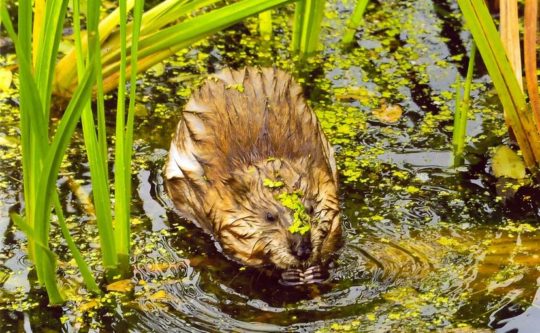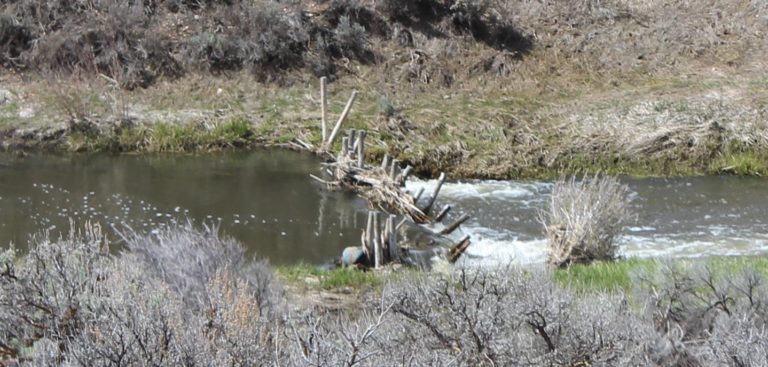
Nature’s Master Architects Return to Utah’s Mountains
Northwest / Southwest
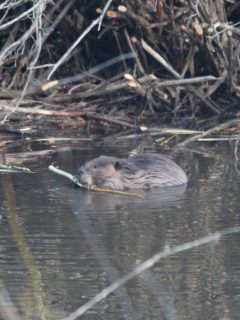
Beaver are nature’s engineers, working tirelessly to build dams, which slow water flow, and construct lodges that protect them from predators and provide them a safe place to raise a family. This beaver activity creates ponds, which enhance aquatic and wetland habitat for fish and wildlife, provide hydrological connectivity, reduce erosion, control sediments, raise the water table, and slow runoff and floods. In short, beavers turn mountains into sponges.
Prior to European expansion, there were an estimated 100 to 200 million beaver in North America. Because their thick fur was desirable for coats and hats, hunters and trappers drove the beaver population close to extinction in many parts of the United States. In the 20th century, as the human population grew, many farmers and settlers found beaver activity a nuisance to their livelihood; unfortunately, indiscriminate killing of beaver was common. As the demand for beaver pelts decreased for fashion and needs of settlers changed in the following decades, fewer beaver were removed from their habitat.
In Utah and across the arid West, water is a precious resource. We rely on water being stored as snow in the mountains and then captured in reservoirs during spring run-off. As the climate warms and weather patterns change, snowmelt runoff is occurring earlier in the year and summer flows are reduced. This results in streams drying out sooner causing plant productivity to plummet. These symptoms of climate change are further amplified by the condition of streams, which are already degraded from the removal of beaver and, often, strained by intense livestock grazing practices.
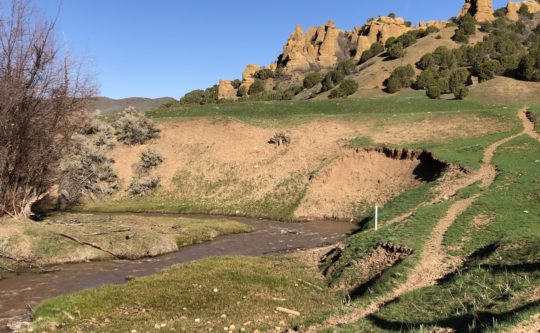
Enter the beaver, the master water engineer and architect of ecosystems.
As our knowledge of beavers’ importance to water systems and ecosystem health increases, there is a growing tolerance, and in many cases enthusiasm, for them. However, degraded streams are often not suitable for beaver re-establishment because they lack even the basic vegetation beaver need for food and protection. We humans need to give them a helping hand.
Wilburforce partners with Wild Utah Project to develop science-based strategies for wildlife and land conservation in the state’s forested mountains. Wild Utah Project recognized stream restoration was integral to beaver and therefore ecosystem recovery, and that the scale of stream degrading was overwhelming. To tackle this large scale issue, they knew they needed to scale up their restoration efforts by putting their enthusiastic volunteers to work. In 2017, Wild Utah Project launched their stream and riparian restoration program with the goal of improving the quality of Utah’s degraded streams using low-tech restoration tools.
Research published in 2014 by Dr. Michael M. Pollock and a team of scientists from Utah State University, Using Beaver Dams to Restore Incised Stream Ecosystems, was helpful to their initial restoration efforts. In their article, the scientists explain the processes of restoring streams and how to pave the way for beaver to return to their former habitat by using low-tech restoration tools, such as building human-constructed beaver dams (a.k.a. Beaver Dam Analogues, or “BDAs”). By constructing BDAs, people can start replicating the environmental benefits of beaver activity which paves the way for the return of beaver to the system as the restoration improves stream and habitat conditions. Once beaver are able to establish themselves in a system, they then continue the stream restoration work into the future (and at no cost!).
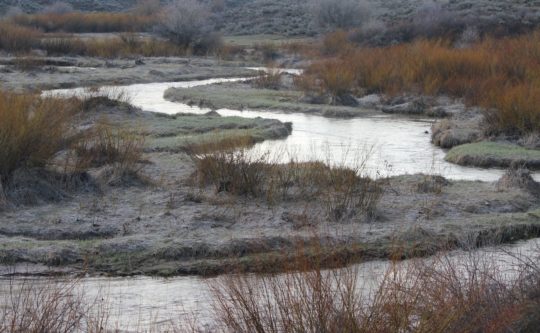
One of Wild Utah Project’s initial beaver restoration projects was at Vernon Creek. In 2017, Wild Utah Project volunteers and agency land managers gathered along the banks of Vernon Creek on a spring morning, paying close attention to Dr. Peter Stacey. Dr. Stacey, a research professor in the Department of Biology at the University of New Mexico, is a long-time collaborator with Wild Utah Project on its Stream and Riparian Restoration Program, and is the lead author on the Rapid Stream Riparian Assessment, a method used for monitoring Wild Utah Project’s stream restoration projects. By flipping over rocks to look at aquatic insects, Dr. Stacy demonstrated one of the many ways to evaluate the health of a stream. Only a few types of aquatic insects were observed in Vernon Creek, a sign of poor water quality. The observations were recorded to compare the before and after restoration condition of the creek.
Several months later, Wild Utah Project gathered again with the U.S. Forest Service, Utah Division of Wildlife Resources, and volunteers to begin restoration of Vernon Creek. The team drove stakes into Vernon Creek’s stream bed, then interwove branches and other vegetation among the stakes to mimic beaver dams. Instantly, the stream began to pond water and wet the sides of the stream. These are conditions in which willows and other wetland vegetation will thrive, creating the habitat beaver need for their families and homes.
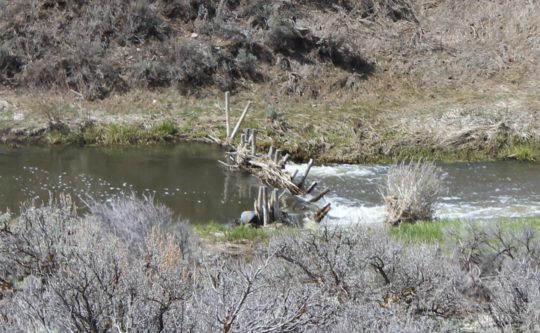
Identifying More Ideal Beaver Habitat in Utah
Recently, Utah State University’s Ecogeomorphology & Topographic Analysis Laboratory created the Beaver Restoration Assessment Tool. The model consists of spatial layers that predict the capacity of riverscapes to support dam-building activity by beaver. Wild Utah Project and partners use the tool to identify locations in Utah where they can focus their restoration efforts.
Since 2017, Wild Utah Project has enlisted 50 volunteers and five partner organizations to build more than 30 beaver dam analogues; additionally, they have completed the Rapid Stream-Riparian Assessment on 25 streams. As Wild Utah Project’s program continues to grow, they are adding additional partners and working on streams across the state of Utah. Their successful partnerships on individual projects has allowed them to investigate completing large-scale projects across entire watersheds.
Wilburforce Foundation has supported Wild Utah Project’s work since 2000 and is proud to partner with them in their mission to provide science-based strategies for wildlife and land conservation.
As beaver continue to reclaim their role in the ecosystem, we discover more and more about their contributions to a healthy and functioning ecosystem. They are helping weave the ecosystem together, creating habitat that allows wildlife to thrive. And Wild Utah Project is using this skilled and tireless engineer to weave together relationships between the people and organizations that care about them.
